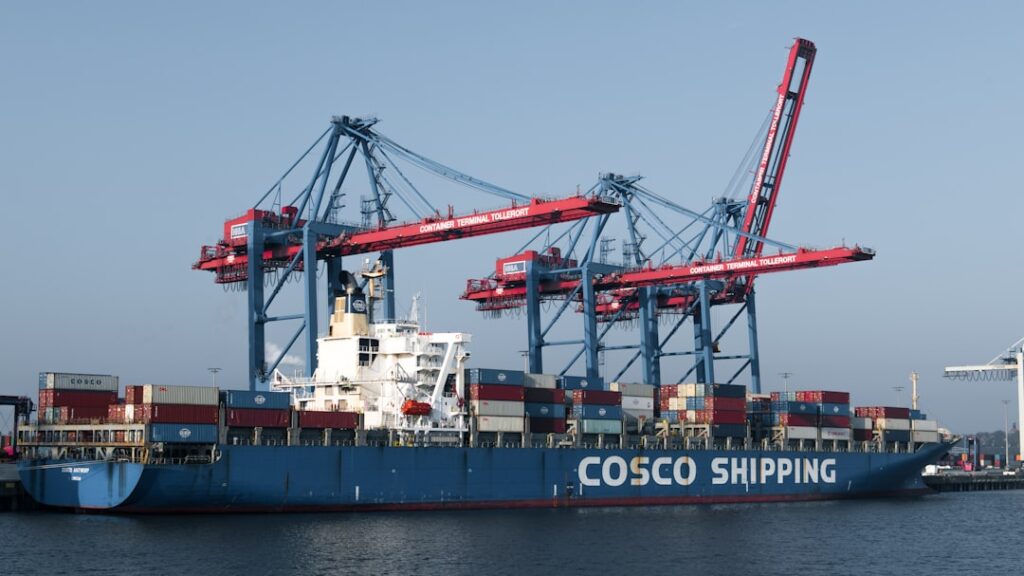As I delve into the world of e-commerce, one of the most crucial aspects I encounter is the setup of shipping and tax configurations in WooCommerce. This platform, which is a popular choice for WordPress users, offers a robust framework for managing online stores. Understanding how to effectively set up shipping and tax is essential for ensuring that my customers have a seamless shopping experience.
The shipping and tax setup not only affects the final price that customers see but also impacts my store’s profitability and compliance with local regulations. When I first started using WooCommerce, I quickly realized that the shipping and tax settings are interconnected. Shipping costs can vary based on location, weight, and dimensions of products, while tax rates depend on the jurisdiction where my business operates.
Therefore, it is imperative for me to grasp the nuances of both systems to avoid any potential pitfalls. By mastering these settings, I can provide accurate pricing to my customers, which in turn fosters trust and encourages repeat business.
Key Takeaways
- WooCommerce allows for flexible shipping and tax setup to meet the needs of different businesses and customers.
- Setting up shipping options in WooCommerce involves configuring shipping zones, methods, and classes to accurately reflect business operations.
- Configuring tax settings in WooCommerce involves setting up tax rates, classes, and locations to ensure compliance with local tax laws.
- Calculating shipping costs in WooCommerce can be done using flat rates, free shipping, or real-time carrier rates to provide accurate shipping costs to customers.
- Managing tax classes and rates in WooCommerce allows for the customization of tax calculations based on product types and customer locations.
Setting Up Shipping Options in WooCommerce
Setting up shipping options in WooCommerce is a multi-faceted process that requires careful consideration of various factors. Initially, I need to decide on the shipping methods I want to offer. WooCommerce provides several options, including flat rate shipping, free shipping, and local pickup.
Each method has its advantages and disadvantages, and I must evaluate which ones align best with my business model and customer expectations. For instance, while free shipping can attract more customers, it may also cut into my profit margins if not managed properly. Once I have determined the shipping methods, I can proceed to configure the shipping zones.
Shipping zones allow me to define specific geographical areas where different shipping rates apply. This feature is particularly useful for businesses that operate in multiple regions or countries. By creating distinct zones, I can tailor my shipping strategies to meet the needs of various customer segments.
For example, I might offer lower rates for local customers while charging more for international shipments. This flexibility enables me to optimize my shipping strategy and enhance customer satisfaction.
Configuring Tax Settings in WooCommerce

Configuring tax settings in WooCommerce is another critical step that I must undertake to ensure compliance with tax regulations. The first thing I need to do is enable taxes within the WooCommerce settings. This option allows me to specify whether I want to display prices inclusive or exclusive of tax.
Depending on my target market, I may choose to show prices without tax to provide transparency to my customers regarding the final cost. After enabling taxes, I can set up tax classes and rates based on the products I sell and the locations where I operate. WooCommerce allows me to create different tax classes for various product categories, which is particularly useful if I sell items that are taxed at different rates.
For instance, digital products may have a different tax rate compared to physical goods. By accurately configuring these settings, I can ensure that my store remains compliant with local tax laws while providing clear pricing information to my customers.
Calculating Shipping Costs in WooCommerce
Calculating shipping costs in WooCommerce involves several variables that I must consider to provide accurate estimates for my customers. One of the primary factors influencing shipping costs is the weight and dimensions of the products being shipped. When I add products to my store, I make sure to input their weight and size accurately so that WooCommerce can calculate shipping costs effectively.
This attention to detail helps prevent unexpected charges during checkout, which could lead to cart abandonment. In addition to product weight and dimensions, I also take into account the shipping method selected by the customer. Different carriers have varying rates based on their services, and I need to ensure that my calculations reflect these differences.
By utilizing WooCommerce’s built-in features or third-party plugins, I can automate the process of calculating shipping costs based on real-time data from carriers. This not only saves me time but also enhances the overall customer experience by providing accurate shipping estimates at checkout.
Managing Tax Classes and Rates in WooCommerce
Managing tax classes and rates in WooCommerce is an ongoing process that requires vigilance and adaptability. As my business grows and evolves, so too do the tax regulations that govern it. To stay compliant, I regularly review and update my tax classes based on changes in legislation or shifts in my product offerings.
For instance, if I introduce a new product category that falls under a different tax rate, I must create a new tax class and assign the appropriate rate. Furthermore, I find it beneficial to keep an eye on local tax changes that may affect my business operations. Many regions periodically adjust their tax rates or introduce new taxes altogether.
By staying informed about these changes, I can proactively update my WooCommerce settings to ensure compliance and avoid potential penalties. This proactive approach not only protects my business but also builds trust with my customers by ensuring they are charged the correct amount at checkout.
Integrating Shipping Carriers with WooCommerce

Integrating shipping carriers with WooCommerce is a game-changer for streamlining my order fulfillment process. By connecting with major carriers such as UPS, FedEx, or USPS, I can automate many aspects of shipping logistics. This integration allows me to access real-time shipping rates directly from the carrier’s system, which means my customers receive accurate shipping costs based on their location and selected shipping method.
Moreover, integrating carriers also simplifies the process of generating shipping labels and tracking information. Once an order is placed, I can easily print labels directly from my WooCommerce dashboard without having to navigate through multiple platforms. This efficiency not only saves me time but also enhances the customer experience by providing them with timely updates on their order status.
By leveraging these integrations, I can focus more on growing my business rather than getting bogged down in logistical details.
Handling International Shipping in WooCommerce
Handling international shipping in WooCommerce presents its own set of challenges and opportunities that I must navigate carefully. One of the first steps in this process is determining which countries I want to ship to and what shipping methods will be available for those regions. By offering international shipping, I can expand my customer base significantly; however, it also requires me to consider additional factors such as customs duties and import taxes.
To facilitate international orders, I ensure that my store provides clear information about potential additional costs that customers may incur upon delivery. This transparency helps manage customer expectations and reduces the likelihood of disputes over unexpected charges. Additionally, I utilize WooCommerce’s built-in features or third-party plugins to calculate international shipping rates accurately based on destination and weight.
By doing so, I can provide competitive pricing while ensuring that my business remains profitable.
Automating Tax Calculations in WooCommerce
Automating tax calculations in WooCommerce is an essential step toward simplifying my e-commerce operations while ensuring compliance with tax regulations. By utilizing plugins or built-in features designed for this purpose, I can streamline the process of calculating taxes based on customer location and product type. This automation not only saves me time but also minimizes the risk of human error when entering tax rates manually.
Furthermore, automating tax calculations allows me to stay updated with any changes in tax laws without having to constantly monitor them myself. Many plugins offer automatic updates for tax rates based on current legislation, ensuring that my store remains compliant without requiring constant oversight from me. This peace of mind enables me to focus on other aspects of my business while knowing that my tax calculations are accurate and up-to-date.
In conclusion, mastering the intricacies of WooCommerce’s shipping and tax setup is vital for any online store owner looking to succeed in today’s competitive e-commerce landscape. By understanding how to configure shipping options, manage tax classes, integrate carriers, handle international orders, and automate calculations, I can create a seamless shopping experience for my customers while ensuring compliance with regulations. As I continue to refine these processes within my store, I’m confident that they will contribute significantly to my overall success in the e-commerce realm.
If you’re looking to enhance your understanding of setting up WooCommerce, particularly in the areas of shipping and tax, you might find it beneficial to explore related topics that can further streamline your e-commerce operations. A useful resource to consider is the article on migrating servers, which can be found at CyberPanel to CyberPanel: Migrating to Another Server. This article provides insights into server management and migration, which are crucial for maintaining a seamless online store experience, especially when dealing with complex setups like WooCommerce. Understanding server dynamics can help ensure that your shipping and tax configurations remain consistent and reliable during any server transitions.
FAQs
What is WooCommerce?
WooCommerce is a popular open-source e-commerce plugin for WordPress, allowing users to easily set up and manage an online store.
How do I set up shipping in WooCommerce?
To set up shipping in WooCommerce, you can go to the WooCommerce settings and navigate to the Shipping tab. From there, you can add shipping zones, methods, and rates based on your specific needs.
What are shipping zones in WooCommerce?
Shipping zones in WooCommerce allow you to group together locations to apply specific shipping methods and rates. This can be based on geographical regions, countries, states, or postal codes.
How do I set up taxes in WooCommerce?
To set up taxes in WooCommerce, you can go to the WooCommerce settings and navigate to the Tax tab. From there, you can configure tax options, tax classes, and tax rates based on your business requirements and location.
What are tax classes in WooCommerce?
Tax classes in WooCommerce allow you to categorize products based on their taxability. This can be useful for applying different tax rates to different types of products, such as standard, reduced, or zero-rated tax.
Can I offer free shipping in WooCommerce?
Yes, you can offer free shipping in WooCommerce by setting up a free shipping method and applying it to specific shipping zones or conditions, such as minimum order amount or specific products.
